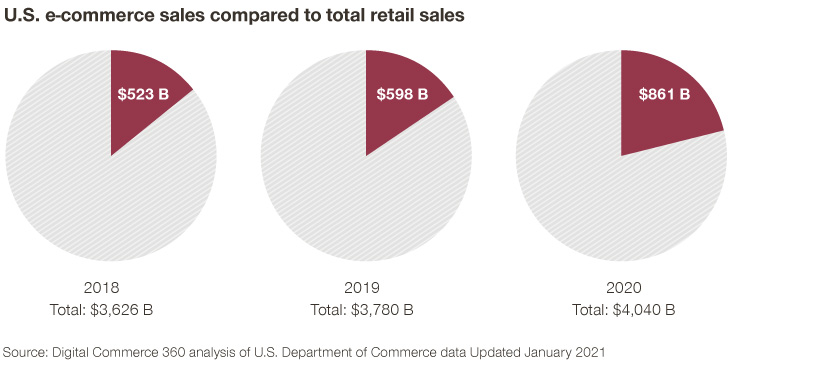In the digital era, it is much easier for consumers to compare prices across different brands and products from all over the world. With more people shopping online than ever before, how can brands legitimize different price points, harmonize global teams, and manage external challenges?
Online shopping in the US hit record highs in 2020 as a result of digital transformation accelerated by the pandemic. Ecommerce increased by an extraordinary 44% year over year, hitting the highest ever retail sales, with consumers spending over 860 billion US dollars.

Increasing globalization combined with digitalization have put the consumer in the driver’s seat, causing competition to vie for the same share of wallet. As a result, there has been a rise in unintended consequences such as: cross-border trade, and surge in grey markets; inconsistent price positioning from market to market; and lack of rigor in addressing foreign exchange (FX) fluctuations.
As consumers continue to shift more and more of their shopping online across the world, there are three key questions that challenge global brands:
- How can brands better position themselves to capture differences in willingness to pay across markets in a world where there is increasing price transparency?
- How can we manage external challenges and unintended consequences while maintaining the brand?
- What are the implications on the governance structure between central and market teams that enable local consumer dynamics?
While there is no silver bullet to fix these problems, there are best practices in how to harness opportunities in local markets, how to manage external challenges, and how to harmonize central and local teams, which can help guide you to a solution that best fits your brand.
How can brands better position themselves to capture differences in willingness to pay across markets in a world where there is increasing price transparency?
First, let’s assume that you’ve established a price architecture in your base market and are now hoping to translate those prices to your local markets. When doing this, we typically consider four key inputs.
- First, what is your current positioning – both in your base market and the local market you wish to translate prices into?
- Second, what is your target consumer’s buying power in that market?
- Third, what is the competitive basket both in that market and in your base market?
- Finally, the all-important question of brand equity: understanding the strength and perception of your brand in each market. For example, it could be that your brand is seen as premium in China, yet has mass appeal in the US. Knowing this can help validate the differentiating prices you will most likely have in different markets.
How can we manage external challenges and unintended consequences while maintaining the brand?
When you have a similar assortment in your base market as you do in other markets where you compete, cross-border, or parallel trade is likely. Understanding and measuring that impact, and whether it is incremental to your business or not, is crucial in helping you manage your long-term brand equity.
Although it isn’t possible to completely get rid of cross-border trade, there is a way to mitigate the risk. That is to set thresholds for your suggested retail price, or MSRP. You can also create an FX rate corridor in a similar way, in order to manage foreign exchange fluctuations.
By establishing a clear bandwidth, you can create a pre-established safe zone within which the FX rate and your MSRPs can fluctuate without any need for review. It will also enable you to see if any indices are in danger of, say, parallel trade, or inflation – helping you to mitigate risks, while keeping you flexible and on trend with your pricing strategy.
What are the implications on the governance structure between central and market teams that enable local consumer dynamics?
There are many different approaches for an organization to design the optimal global pricing strategy. There’s no one-size-fits-all, as it depends on how other decisions are made within your business. It’s about finding a balance between central vs. local.
However, there are certain implications that you should consider to help you lean either one way or the other. For instance, a centralized model can better maintain the strategic direction of your brand, but a more local model will better understand the brand’s positioning in each market, as well as how to execute the structure more effectively in each region.
Regardless of the design, the important thing is to communicate by creating a feedback loop between local and central, so that you can continue updating your strategy in line with the fast evolving economy.
You can find out more about how you can harmonize prices in the digital era by watching our webinar: Global Pricing & Governance: Harmonize in an increasingly transparent world.
Get in touch with the Authors








